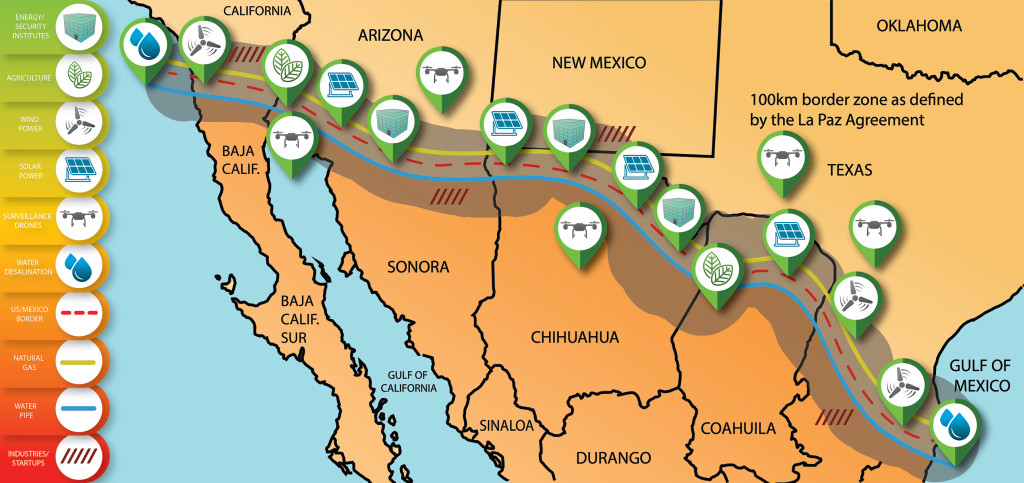A group of engineers and scientists have announced a proposal to build an “energy corridor”, instead of an endless and inert wall, along the U.S.–Mexico border. The plan would bring energy, water, and jobs to the region, in addition to built-in border security. The idea consists of lining the boundary with 2,000 miles of natural gas, solar and wind power plants. Using some of the energy to desalinate water from the Gulf of Mexico and the Pacific Ocean and ship it through pipelines to thirsty towns, businesses and new farms along the entire border zone, hiring hundreds of thousands of people from both countries to build and run it all. Companies would make money and provide security to safeguard their assets. A contentious, costly no-man’s-land would be transformed into a corridor of opportunity. Unlike President Donald Trump’s desired border wall, the proposed energy corridor would be a joint effort between U.S. and Mexico.
A dream? Maybe. But the idea is more than a pipe dream.
Purdue University led the consortium of 28 U.S. scientists and engineers that proposed the plan. The plan is presented on Purdue’s website as “a first-of-its-kind energy park that spans the 1,954 miles of the border,” and is titled “What if a border wall could pay for itself?”
The researchers even mention that “President Trump himself” has floated a similar idea “as one of many possibilities.” Trump talked publicly about building a solar border wall in 2017 (though he certainly wouldn’t be considered a solar-friendly president).
Last week the consortium delivered the plan to three U.S. representatives and one senator. “Let’s put the best scientists and engineers together to create a new way to deal with migration, trafficking—and access to water. These are regions of severe drought,” says Luciano Castillo, a professor of energy and power at Purdue University who leads the group. “Water supply is a huge future issue for all the states along the border in both countries.”
Many people from Mexico and farther south are trying to enter the U.S. precisely because there is no opportunity for them at home.
The future energy corridor will create massive opportunities for employment and prosperity. Just imagine the number of jobs created just for the part of the plan that calls for installing eight million solar panels.
“We will need economists,” Castillo says. “We will need people with experience in manufacturing. We’ll need policy experts who know how energy and water can be traded. Legislators just have to think differently about how to solve the border issue. Don’t think of it as a barrier. Think of it as an energy corridor, a water corridor. It can create great opportunity for both countries. It can create peace.”






